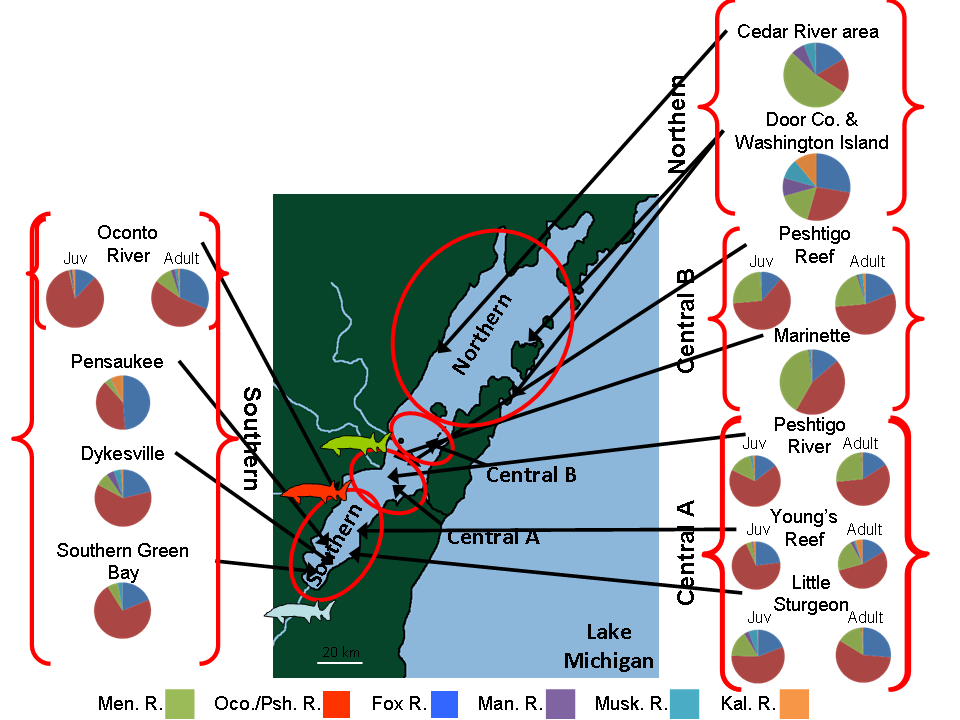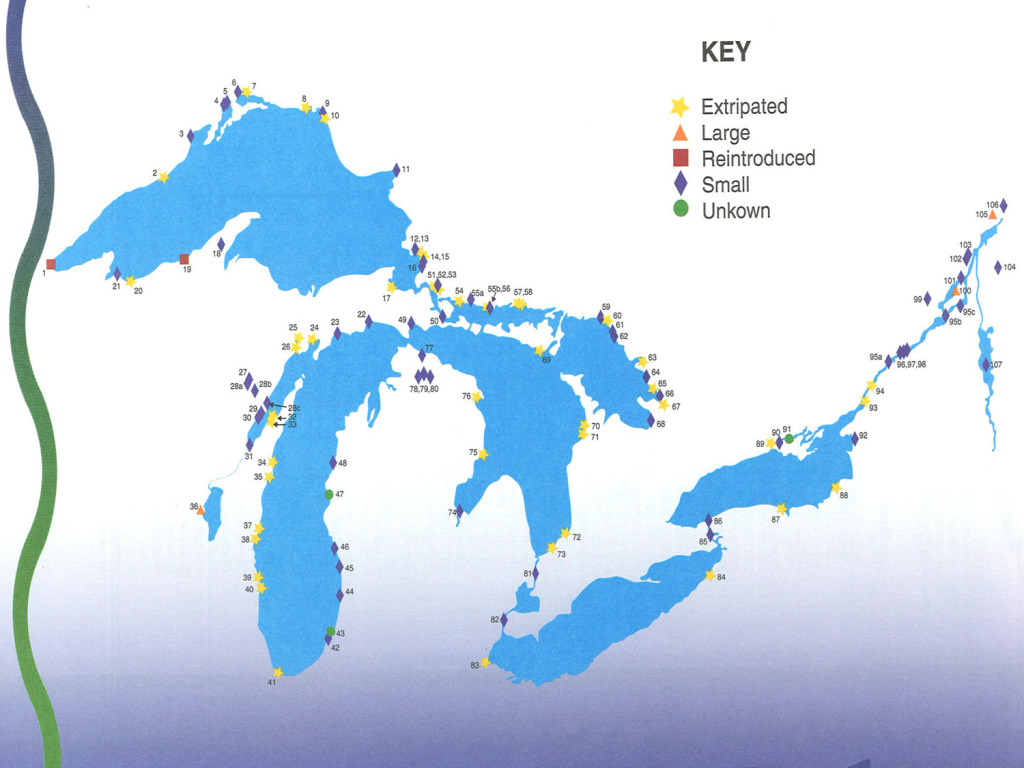Coupled Great Lakes-Tributary Ecosystems
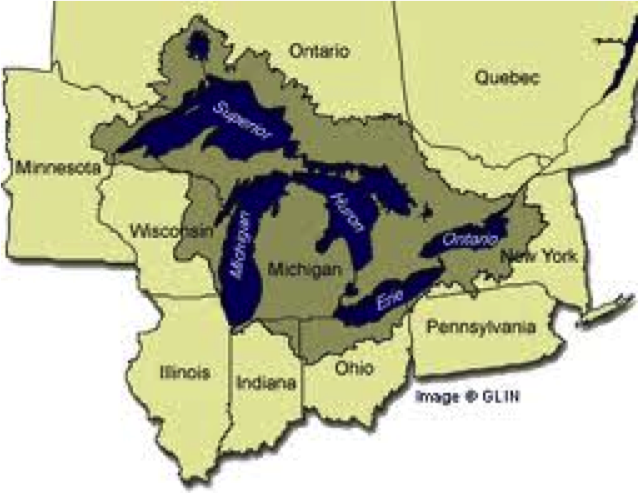
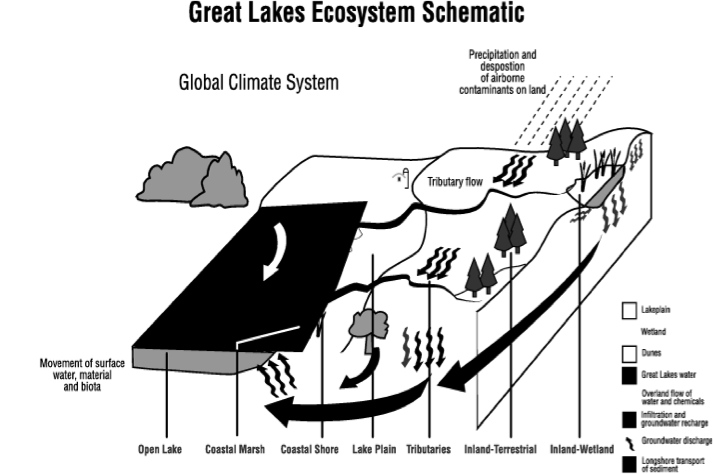
The Great Lakes basin extends far beyond the borders of the Great Lakes themselves. The basin includes rivers and wetlands that extend miles inland, draining large areas. Terrestrial areas bordering rivers that drain into the Great Lakes are comprised of many different natural landscape types (e.g., woodlands, prairies) as well as man-made landscapes including agriculture and urban centers.
Waters entering the Great Lake via tributaries originate as ground water and surface water run-off. Waters may carry many natural (e.g., sediment) and man-made (e.g., organic pollutants) compounds. Characteristics of waters entering the Great Lakes such as temperature and discharge represent cues used by migratory fishes, including lake sturgeon, to signal that conditions are suitable for spawning. Cues are also believed to be important to allow individuals to ‘imprint’ on streams where they were produced so they may ‘home’ back to the rivers to reproduce when sexually mature.
Natural and Human-Related Inputs into Great Lakes Systems
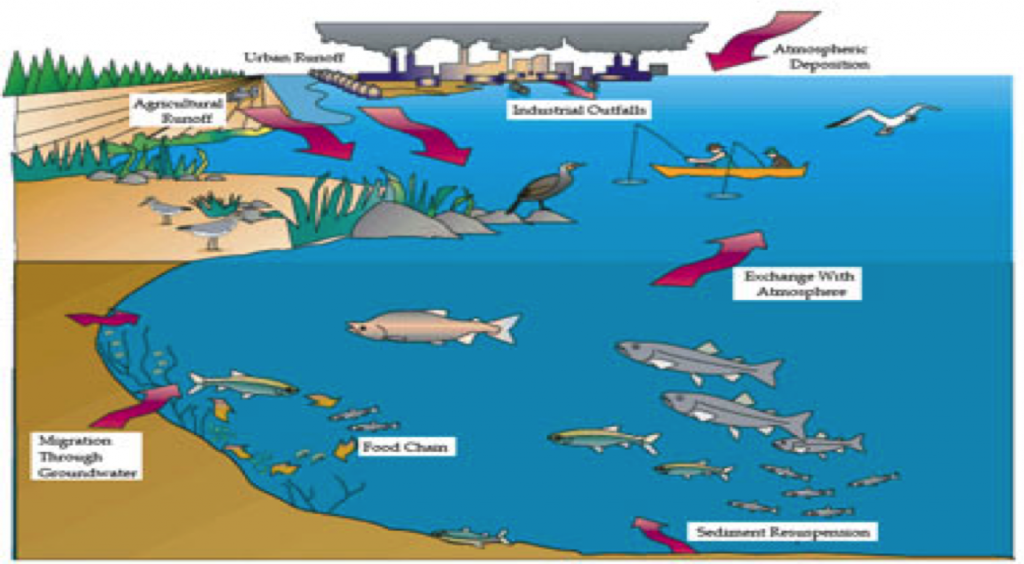
The Great Lakes are complex ecosystems. There is a natural coupling between river and Great Lakes systems. Many species and species assemblages or communities are co-adapted to features of these complex and coupled systems. Lake sturgeon are members of a group of species referred to as “Benthivores”. A Benthivore feeds primarily on animals living on the bottom of a body of water.
Examples of Species Utilizing Great Lakes Tributaries
Many fish species spend the vast majority of their time in the Great Lakes and only occupy river habitats for short periods, typically to reproduce or to take advantage of seasonally abundant prey (e.g., eggs and larvae of other spawning species), Lake sturgeon may occasionally use rivers during non-spawning periods but typically they are only found in rivers during April through early June when spawning occurs.
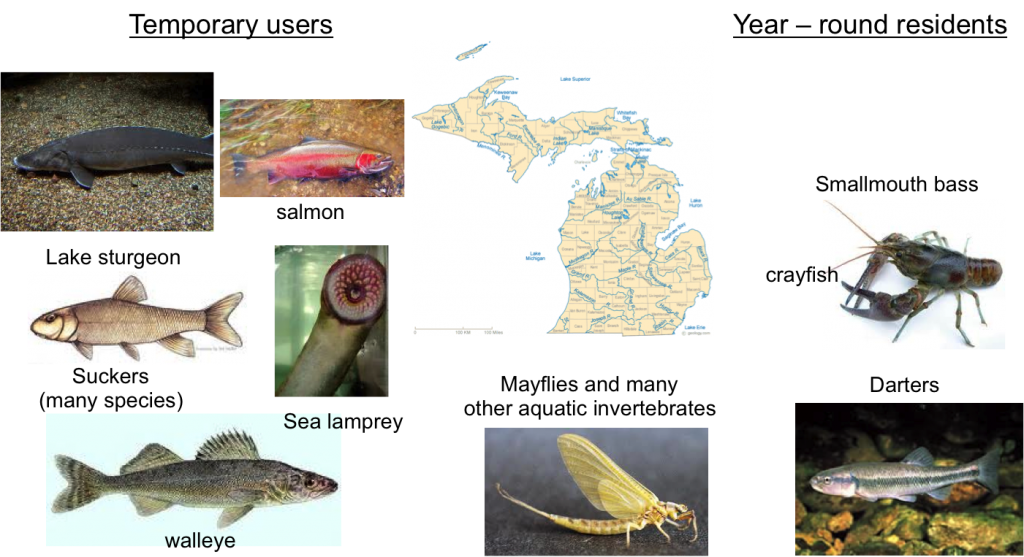
Lake Sturgeon Distribution and Abundance
Figure reproduced from the Holey et al (2000) Great Lakes Fishery Trust report “Research and assessment needs to restore lake sturgeon in the Great Lakes”. The figure shows the locations and status of lake sturgeon populations in the Great Lakes. Researchers believe that lake sturgeon abundance and distribution is currently less than 1% of historical levels.
Factors Affecting Lake Sturgeon Distribution, Abundance and Recruitment
The abundance and distribution of lake sturgeon and most other Greats Lakes fish species have been impacted greatly by human activities. Historically, habitats surrounding and in rivers were dramatically altered by activities including logging. Uncontrolled commercial fisheries greatly reduced lake sturgeon numbers during the 1800’s and early 1900’s. Currently, sport harvest has been greatly reduced but sturgeon are still susceptible to inadvertent capture and mortality. Dams were built in many Great Lakes tributaries to provide electrical power to local communities. These dams were typically constructed in areas of high elevational gradient which were associated with spawning habitat. Pollution also affected habitat quality and survival of young fish.
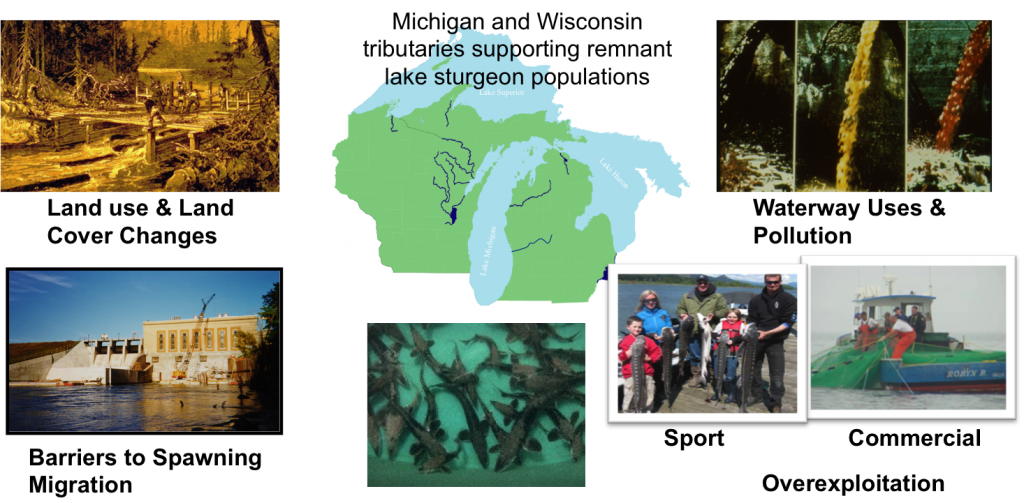
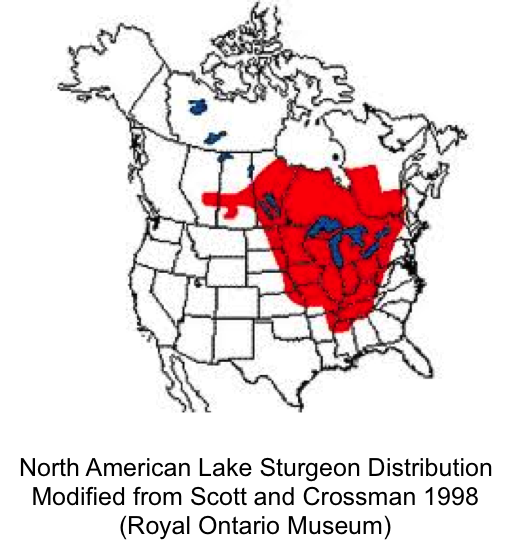
Recaptures of lake sturgeon in the Great Lakes reveal that individuals have the ability to move between lake basins (for example between northern Lake Michigan and Lake Erie. Because of the long time individuals live in the lakes before they reach sexual maturity and because individuals typically don’t spawn every year (Forsythe et al. 2012) observations of long-distance movements have been interpreted to mean that individuals move freely over large areas. Genetics differences between populations that spawn in different Great Lake tributaries reveal that populations have been reproductively isolated from one another and that like salmon, individuals tend to home to their natal rivers when they reach sexual maturity and spawn. Genetic data also reveal that individuals that were produced in different rivers do not typically move randomly over large areas. Genetic data suggest that individuals tend to use open lake waters in close proximity to their natal river. This trend is particularly evident for younger (pre-reproductive) individuals.
Movements of individuals are typically monitored based observations of individuals that have been physically tagged and subsequently observed in a different location. For example floy tags shown in the photo to the left are often used. Increasingly, genetic data are also used. Based on information on the frequency of ‘alleles’ in different spawning populations, individuals captured in open waters of the Great Lakes can be assigned to a population of origin based on the probability of observing the individual ‘genotype’ in each of the spawning populations (for example observations of yellow/yellow, yellow/red or red/red genotypes) based on the frequency of red and yellow alleles in populations 1 and 2 is in the example below.

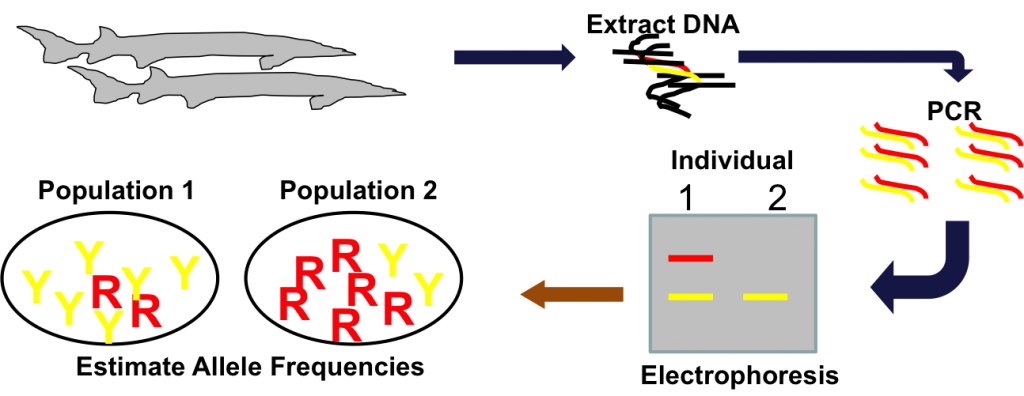
Genetic analyses of over 1500 lake sturgeon captured in the Lake Michigan basin reveal that the distribution of fish originating from different rivers varies. For example, estimates of the proportions of individual from each population are indicated by the proportion of the pie chart associated with each sampling location in the basin. Individuals captured from the eastern basin in Michigan waters are predominately composed of individuals from Michigan tributaries with the exception of contributions from the Fox River in the SE portion of the basin. Individuals captured in Wisconsin waters are predominately from Wisconsin rivers with the exception of samples from the far north-east portion of the basin.
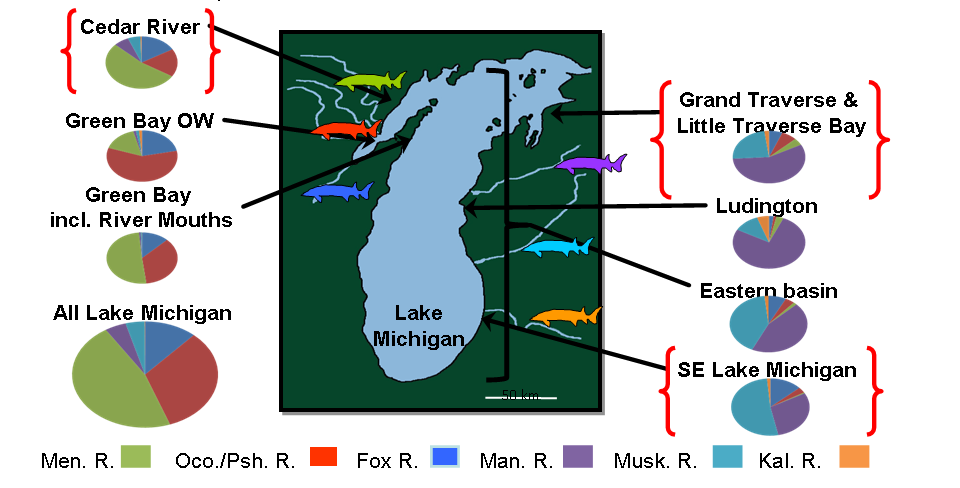
Genetic analysis estimating the proportions of lake sturgeon originating from different Lake Michigan tributaries to samples collected in the mouths of rivers entering to the lake. Samples from Manistee Lake and Muskegon Lake were comprised nearly exclusively of fish from these rivers. In Wisconsin waters, fish from multiple rivers use river mouths indicating greater mixing than observed in Michigan river mouths.
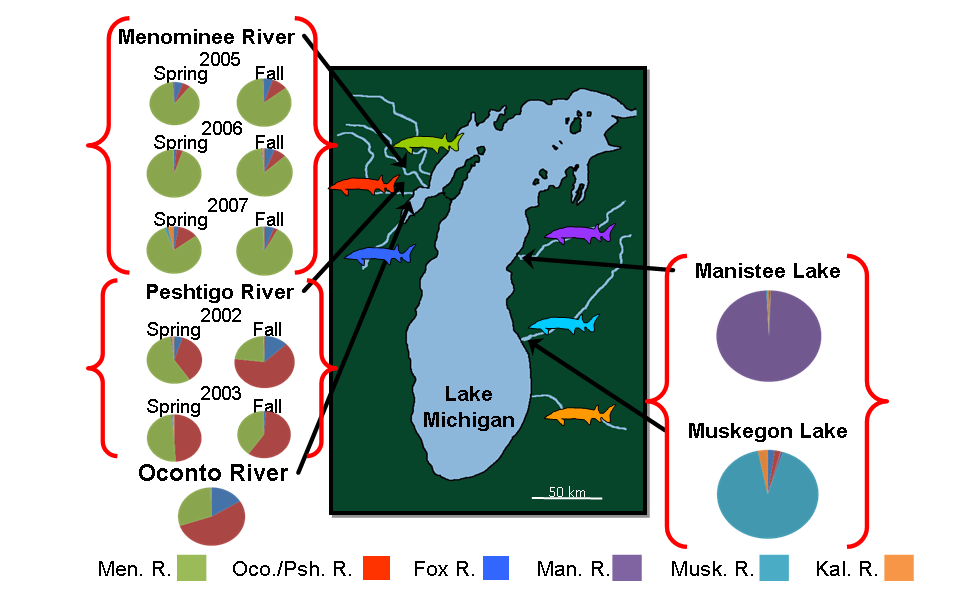
Estimates of the proportion of individuals originating from different Lake Michigan Rivers varies over short spatial scales. For example, the composition of samples collected from different areas of Green Bay in Wisconsin waters differ considerably. Locations close to the river of origin tend to be composed of a greater proportion of individuals from that river. For example, we see increasing contributions of Menominee River fish in collections in a south to north gradient in the bay.
